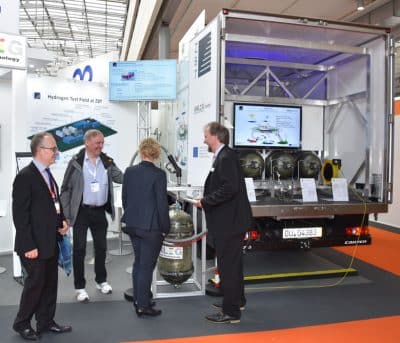
Most of today’s mobile energy and stationary UPS units run on fossil fuels, such as diesel or liquefied petroleum gas. Hydrogen is a viable alternative to these fuels, particularly because it can be turned into a zero-emission energy source if produced from renewables.
However, the lack of a comprehensive infrastructure means that units generating power from hydrogen have so far failed to capture a sizeable portion of the market. First, there is no specialized equipment to create an inexpensive supply chain for stationary systems. Second, there are few mobile fuelers that could be used to demonstrate the technology.
The energy station that is being constructed as part of this project meets several essential requirements and provide a range of vital functions:
- Delivers hydrogen to stationary systems, e.g., UPS units for critical infrastructure, and vehicles.
- Offers a stand-alone power grid for the temporary connection of small consumers.
- Supplies especially off-grid and remote installations in difficult terrain.
Design and implementation
The station is to utilize as many sources of hydrogen as possible. It has a range of connectors that permit storage fill-ups through pumps at 350-bar hydrogen stations for buses and conventional 200-bar or 300-bar gas cylinder banks. Refueling at 500 bars is also possible.
In principle, the energy-independent system integrated into the vehicle consists of several high-pressure compartment tanks, a PEM fuel cell to produce electricity, an electric-powered hydrogen compressor, outlets for different pressure levels, instrumentation and control equipment, and piping.
The hydrogen to supply the fuel cell and provide fueling capabilities is stored at up to 500 bars in eight type IV tanks, made of carbon fibers and polymer liner. Together, these tanks can hold a total of 50 kilograms of the gas. Each storage compartment can be filled and emptied individually to replenish stationary storage.
…
Written by Joachim Jungsbluth, Bernd Oberschachtsiek, both for ZBT GmbH – Zentrum für BrennstoffzellenTechnik, Duisburg, Germany


























0 Comments